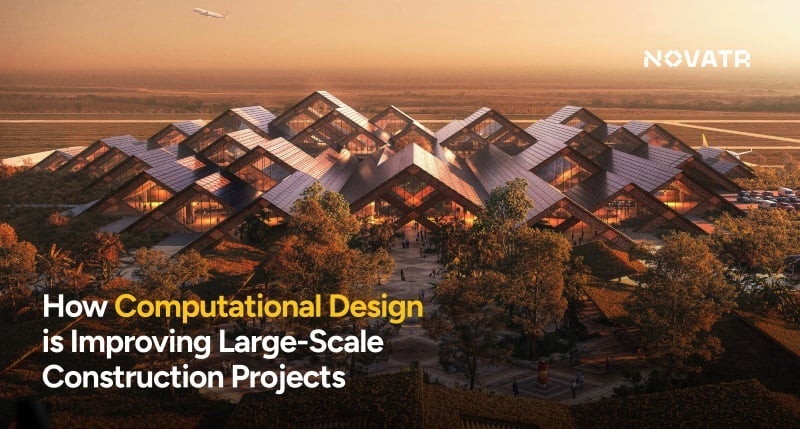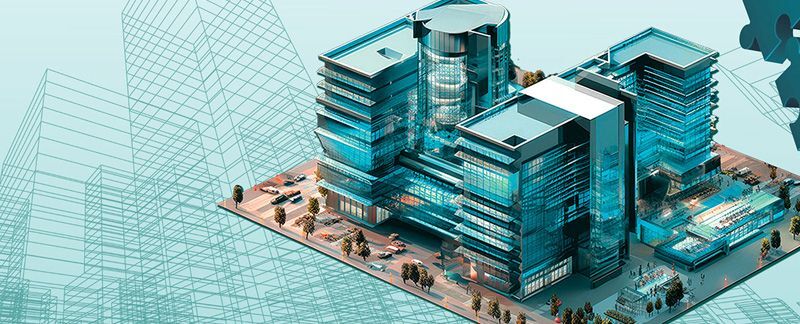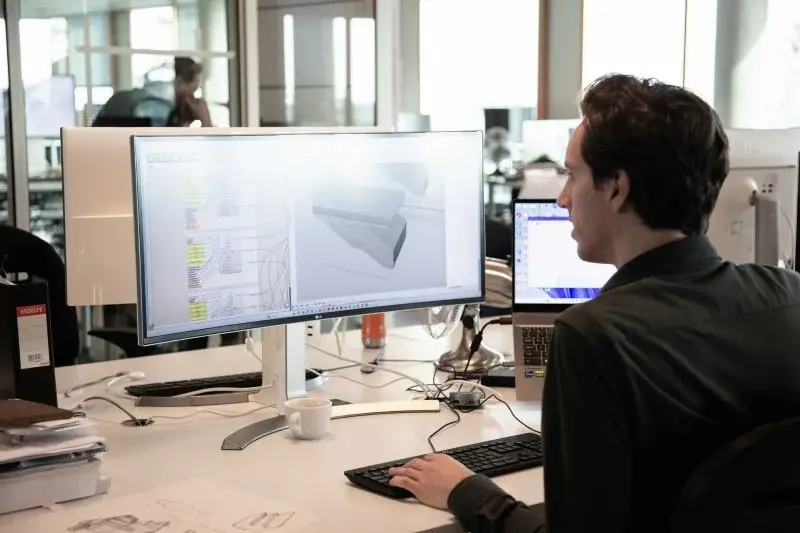How Computational Design is Improving Large-Scale Construction Projects

Table of Contents
The construction sector has recently undergone a major change in project development and execution methods. The adoption of computational design architecture as a problem-solving method represents a major force behind construction industry changes because it relies on algorithms and digital logic with coding systems for solving complex architectural problems. Engineers and architects can develop performance-based data models through computational design because they can handle multiple constraints while creating functional designs.
So, what is parametric design in architecture? Parametric design operates as a process that enables users to change one variable and achieve automatic model updates. The system streamlines parallel testing procedures and structures of any complexity through automatic design updates from real-world data inputs. The benefits of computer-aided design come from computer-aided design methods, which help accelerate work processes while enabling better decisions in major construction projects.
Challenges in Large-Scale Construction Projects
The design and engineering obstacles associated with major construction projects such as airports, stadiums, high-rise buildings, and infrastructure centers exist in large numbers. These include:
- Models of complicated geometry need exact representation.
- Tight construction timelines with high coordination needs.
- Environmental, together with structural elements and functional aspects of large data collections.
- Various professionals from architecture and engineering work with contractors in collaborative projects.
- The modification of design specifications needs consistent application across multiple project components.
The linear design process makes it difficult for traditional tools to handle current project issues. Manual updates become necessary because computer aided design construction has limitations that cause process delays.
How Computational Design Solves These Challenges

Computational design software addresses the above challenges using algorithms to generate, evaluate, and refine design solutions. Creating responsive and adaptive models enables the team to make data-backed decisions faster.
Here’s how:
1. Design Automation
Through parametric designing in modern architecture, designers can automate repetitive tasks like structural framing, surface detailing, or environmental analysis. Once rules are set, the model adapts automatically to design changes.
2. Real-Time Optimization
Computational design allows real-time feedback on environmental factors, materials, and structural performance. For example, lighting analysis or load distribution calculations can be integrated into the design process early.
3. Better Collaboration
Using platforms like Rhino and Revit integrated with computational tools like Grasshopper and Dynamo, teams across disciplines can work within a unified design framework. This helps avoid clashes and reduces costly revisions.
4. Efficient Resource Management
The benefits of parametric design in architecture include material optimization. Adjusting geometry in real-time makes it easier to reduce waste, estimate costs more accurately, and make sustainable choices.
In essence, computational design architecture solves major issues that traditional tools can't handle efficiently at scale.
The benefits of parametric design in architecture include material optimization. Adjusting geometry in real-time makes it easier to reduce waste, estimate costs more accurately, and make sustainable choices.
One notable example of computational design in a large-scale project is the Louvre Abu Dhabi. The building’s intricate dome was developed using advanced algorithmic modeling and parametric tools. Learn more about how this was achieved in How Was Computational Design Used to Construct the Louvre Abu Dhabi?.
Also Checkout: Top Computation Design Practices in 2025
Tools Used in Computational Construction Design
Several computational design software platforms and plug-ins are commonly used across large-scale construction projects:
1. Rhino Software
A powerful 3D modeling tool known for handling complex geometries. Rhino is frequently used in architectural design due to its flexibility and compatibility with other tools.
2. Grasshopper Software
A plug-in for Rhino, Grasshopper software enables visual scripting and parametric modeling. It allows users to define relationships between design elements, creating adaptable models without traditional coding.
3. Dynamo
Integrated into Revit, Dynamo is a visual programming tool for automating BIM workflows. It is particularly useful in large-scale infrastructure projects for managing repetitive tasks and data-heavy processes.
4. Autodesk Generative Design
This tool uses algorithms to generate design options based on defined goals, such as load-bearing strength, energy use, or construction cost.
The advantages of parametric designing in architecture become clearer with these tools. They reduce manual effort, allow rapid prototyping, and integrate performance analytics into the design process.
For a detailed look into how computational design has developed and influenced tool creation, refer to a brief history of the evolution of computational design.
Future of Computational Design
The AEC industry will witness a growing significance of computational tools in its future operations. Designers must adopt automation, AI integration, and cloud-based platforms because their projects handle increasing data.
Key Trends:
- The future generation of design tools will apply ML algorithms to develop design possibilities derived from the analysis of previous projects.
- Combining BIM with parametric design creates integrated data exchange between different work disciplines.
- The upcoming models under Generative Design for Sustainability will have automatic environmental impact assessment and structural optimization capabilities.
The industry heads predict that new technological developments will enable architectural and engineering professionals to handle complex urban issues. The early adoption of computational design in building projects leads to fewer coordination failures, as explained in Procore's publication.
Users can benefit from digital workflows based on computational design through Bluebeam's blog to reach higher potential for high-rise and infrastructure projects.
The article Benefits of Emerging Computational Design Developments in the AEC Industry presents industry examples that examine AI-integrated modeling and cloud-based collaboration tools in real-world practice for the AEC industry.
Conclusion
Massive construction works require exact and adaptable procedures that need to happen quickly. The current processes fall short of fulfilling these requirements successfully. Parametric tool integration into computer aided design construction creates meaningful connections between design ideas and actual construction feasibility. The benefits of computer-aided design through algorithmic logic integration are that it helps construction teams identify and solve problems before construction starts on-site.
The evolution of the AEC industry requires designers to master computational design architecture because it has become essential. Using Rhino software and Grasshopper software allows architects, engineers, and project managers to lead major high-impact projects that demand advanced capabilities.
Future-ready success and market competition demand immediate adoption of computational workflow skills as a fundamental requirement for professionals in this field. The Master in Computational Design Course by Novatr exists to help architects and engineers develop their digital design tools through practical work under expert supervision.
A career path offers great potential for computational design skills to take you forward. The following blog, 7 Best Career Roles in Computational Design for Architects and Engineers outlines the most in-demand paths in the growing computational design field.
Novatr provides additional information and updates about architectural and construction innovation through its Resource Page.

 Thanks for connecting!
Thanks for connecting!
.jpg)

.png)





